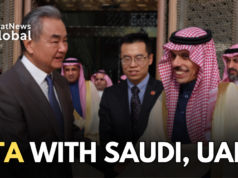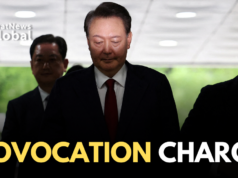In China, officials acknowledged “many complex contradictions,” at the end of a key Communist Party meeting this week, pointing to a bumpy road ahead for policy implementation.
Pressure for deep changes in how China, the world’s second-largest economy functions has risen this year, with consumer and business sentiment near record lows domestically, and global leaders increasingly concerned with China’s export dominance.
Following a four-day, closed-doors meeting led by President Xi Jinping, which takes place once in roughly five years, officials made a raft of seemingly contradictory pledges, from modernising the industrial complex while also expanding domestic demand to stimulating growth and simultaneously curbing debt risks.
The initial summary of the meeting, known as plenum, did not contain details on how Beijing plans to resolve the tensions between policy goals, such as how to get consumers to spend more while resources flow primarily to producers and infrastructure.
Concerns are growing in China that without a structural shift that gives consumers a greater role in the economy, debt will continue to outpace growth in order to finance Beijing’s industrial modernisation and global prominence goals.
That raises the stakes. Some analysts warn the current path fuels risks of a prolonged period of near-stagnation and persistent deflation threats as seen in Japan since the 1990s.
“High debt levels plus increasing deflationary pressures eventually could result in a Japan-style … low growth and very low inflation,” said Julian Evans-Pritchard, head of China economics at Capital Economics.
“That, I think, would force them to change course on their current policies. But that might not happen straight away. That might only happen in a few years’ time.”
Contradictions in Chinese policy efforts have been present for decades, as were goals to increase manufacturing value added, enhance social security, liberalise land use and improve local government tax revenues.
But making tough choices is an increasingly urgent task. China grew at a slower than expected pace in the second quarter, leaning hard on industrial output and external demand, but showing persistent domestic weakness.
Speaking at a media briefing on Friday along with other Party officials, Tang Fangyu, deputy director of the central committee’s policy research office, acknowledged the challenges.
“The deeper the reform goes, the more complex and acute the conflicts of interest it touches,” Tang said.
“Pushing forward Chinese-style modernisation faces many complex conflicts and problems, and we must overcome multiple difficulties and obstructions.”
The European Union Chamber of Commerce in China said it was “positive that China’s leadership has again acknowledged many of the headwinds facing the country’s economy,” but noted the outcome was largely “a reiteration of points.”
“There appears to be no deviation from (China’s) immediate priority, which is to balance its economic recovery against national security concerns, while maintaining social stability.”
Thirty eight years in journalism, widely travelled, history buff with a preference for Old Monk Rum. Current interest/focus spans China, Technology and Trade. Recent reads: Steven Colls Directorate S and Alexander Frater's Chasing the Monsoon. Netflix/Prime video junkie. Loves animal videos on Facebook. Reluctant tweeter.




